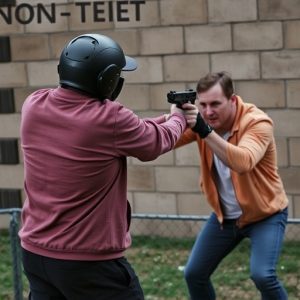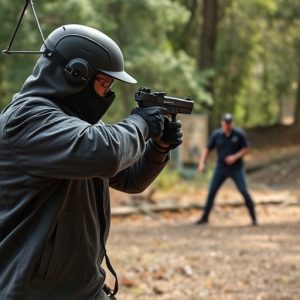Navigating Concealed Carry Laws: Best-Rated Stun Guns & Safety Measures
Understanding local laws regarding concealed carry stun guns is crucial for personal safety and resp…….
Understanding local laws regarding concealed carry stun guns is crucial for personal safety and responsible ownership. While popular as a non-lethal defense option, regulations vary greatly by region, affecting age restrictions, carry locations, power outputs, and more. When selecting best-rated stun guns, prioritize high milliamperes (mA) ratings, safety features like triggers and shut-off mechanisms, compact designs, durability, warranties, and positive reviews. Federal vs state rules on ownership are complex; understanding these distinctions is vital for compliance. Specific circumstances allow concealed carry without a firearm permit, focusing on self-defense. Effective usage requires training to handle, deploy, and use stun guns legally and safely, ensuring self-defense without causing permanent harm or violating laws.
In today’s unpredictable world, personal safety is a top priority. One increasingly popular means of self-defense is the concealed carry of stun guns, compact devices offering a non-lethal deterrent. This comprehensive guide explores the intricate web of regulations surrounding stun gun ownership, delving into federal and state laws to ensure responsible usage. We’ll uncover hidden weapon exceptions, highlight best-rated stun guns for personal protection, and emphasize safety measures crucial for those considering this powerful self-defense tool.
- Understanding Concealed Carry Laws: A Comprehensive Overview
- The Role of Stun Guns in Self-Defense: Legal Perspective
- Best-Rated Stun Guns for Personal Protection: Features and Considerations
- Navigating Regulations: Federal vs State Rules on Stun Gun Ownership
- Hidden Weapon Exceptions: When is Concealed Carry Permitted?
- Safety Measures and Training: Responsible Stun Gun Usage
Understanding Concealed Carry Laws: A Comprehensive Overview
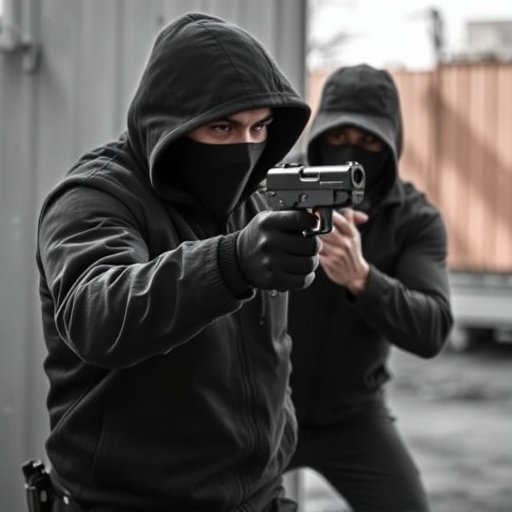
Understanding concealed carry stun gun regulations is paramount, especially for individuals seeking effective personal protection. Each jurisdiction has its own set of rules and restrictions, which can vary significantly from one place to another. These laws dictate who can carry a stun gun, where it can be carried, and under what circumstances. Knowing and adhering to these regulations ensures not only compliance with the law but also promotes safety.
When considering the best-rated stun guns for self-defense, it’s crucial to research the specific requirements in your area. Some regions allow for concealed carry of stun devices without a permit, while others may mandate permits or licenses. Additionally, certain locations have restrictions on the voltage or power output of stun guns, as well as size and weight limitations. Staying informed about these details empowers you to choose the most suitable self-defense tool that complies with your local regulations, ensuring peace of mind in potentially dangerous situations.
The Role of Stun Guns in Self-Defense: Legal Perspective
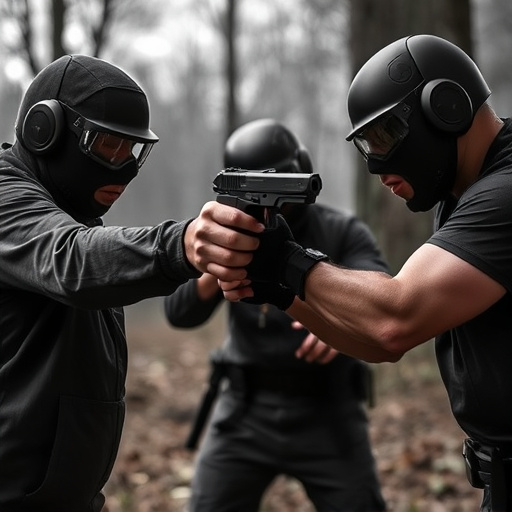
Stun guns, also known as electronic control devices (ECDs), have emerged as powerful tools in the realm of personal defense. From self-defense enthusiasts to everyday citizens seeking added security, stun guns offer a non-lethal means of deterring and disabling attackers. In terms of legal perspective, many regions have acknowledged their effectiveness and implemented regulations that allow for concealed carry of stun guns under certain conditions.
In the world of self-defense, best-rated stun guns play a pivotal role in providing individuals with an extra layer of protection. These devices deliver a powerful electrical shock, temporarily incapacitating an assailant without causing permanent harm. Navigating the legal landscape surrounding stun guns involves understanding local regulations that dictate age restrictions, permitted locations for concealed carry, and power output limitations. By adhering to these guidelines, responsible citizens can legally arm themselves with best-rated stun guns for self-defense while ensuring public safety.
Best-Rated Stun Guns for Personal Protection: Features and Considerations
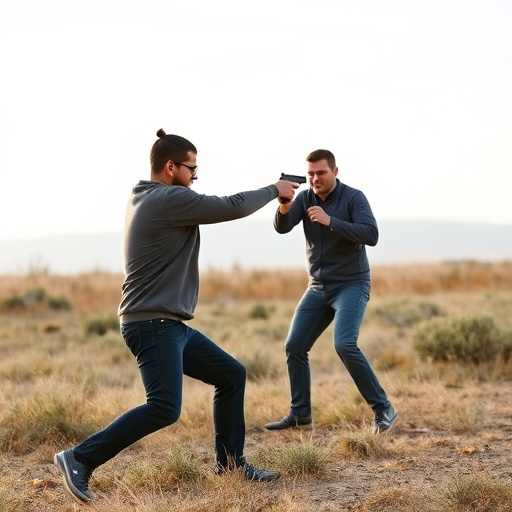
When it comes to choosing the best-rated stun guns for personal protection, several key features and considerations come into play. First and foremost, look for devices with a powerful electric charge, typically measured in milliamperes (mA). A higher mA rating indicates greater shock potential, which is crucial for neutralizing an attacker quickly. However, it’s essential to balance this with safety features like trigger controls and automatic shut-off mechanisms to prevent accidental activation or use by unintended parties.
Another vital aspect is the stun gun’s design and convenience. Compact and lightweight models are easier to carry discreetly, making them ideal for personal self-defense. Consider devices that fit comfortably in your hand or can be attached to a key chain or belt clip. Additionally, durable construction ensures reliability in various environments. Look for brands that offer warranties and positive user reviews to confirm the stun gun’s quality and performance.
Navigating Regulations: Federal vs State Rules on Stun Gun Ownership
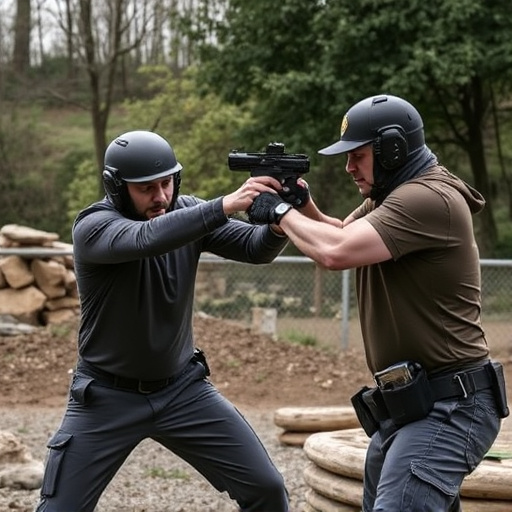
Navigating Regulations: Federal vs State Rules on Stun Gun Ownership
In the United States, the laws surrounding stun gun ownership are a complex blend of federal and state regulations. At the federal level, the law is relatively clear—stun guns are not explicitly banned under federal legislation. However, they are classified as less-lethal weapons, subject to certain restrictions. The Transportation Security Administration (TSA), for instance, prohibits stun guns in carry-on luggage due to their potential use as a weapon. This federal oversight provides a baseline but leaves significant room for variation at the state level.
Each state has its own set of regulations regarding stun gun ownership and concealed carry permits. Some states allow citizens to carry stun guns without a permit, while others require a license or registration. Still, other states have specific restrictions on the type, size, and power of stun guns permitted for personal use, with many prioritizing public safety above all else. When considering purchasing a stun gun for self-defense, understanding these federal and state regulations is crucial to ensure compliance and access to the best-rated stun guns available on the market.
Hidden Weapon Exceptions: When is Concealed Carry Permitted?
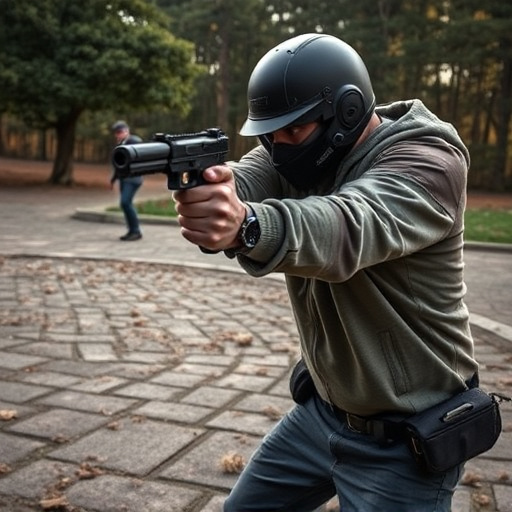
In many jurisdictions, there are specific circumstances where concealed carry of a stun gun is permitted, even without a traditional firearm permit. These exceptions often center around self-defense and personal safety, recognizing that individuals have the right to protect themselves in certain situations. For instance, some states allow for the concealed carry of a stun device if it’s used primarily for self-defense purposes. This means law enforcement officers, security guards, or even regular citizens who feel their personal safety is at risk may legally carry a stun gun while off-duty or in non-work-related settings.
When considering the best-rated stun guns for self-defense within these exceptions, users should look for devices with high voltage outputs (typically 100,000 volts or more) and robust build quality to ensure effectiveness and reliability. Key features like a tactical design, easy activation mechanisms, and holsters for concealed carry further enhance the utility of these stun guns in emergency situations.
Safety Measures and Training: Responsible Stun Gun Usage

When considering concealed carry stun gun regulations, safety measures and proper training are paramount. Owning a stun gun, especially among the best-rated stun guns for self-defense, is not just about having a tool; it’s a responsibility. Users must be trained in its safe handling, deployment, and legal use to ensure they can defend themselves effectively without causing unintended harm or violating laws. Many states have specific training requirements for concealed carry permits, including hands-on practice with stun guns. This training equips individuals with the skills needed to respond calmly under pressure, aiming for non-lethal force whenever possible while neutralizing an attacker.
Proper usage involves understanding range, activation mechanisms, and safe storage. Stun guns operate on electricity, so knowing their limited range and the need for direct contact is crucial. Training also teaches individuals to aim for the largest target areas—the upper arms, sides of the face, or thighs—to maximize effectiveness while minimizing risk of permanent injury. Responsible stun gun usage involves understanding local laws and keeping the device secured when not in use, ensuring it remains a tool for self-defense rather than a source of accidental discharge or misuse.
In navigating concealed carry stun gun regulations, understanding both federal and state laws is paramount. While best-rated stun guns offer significant personal protection, their ownership comes with strict guidelines. By adhering to safety measures and proper training, individuals can responsibly exercise their rights within legal exceptions. This comprehensive overview equips readers with knowledge to make informed decisions regarding self-defense options.
